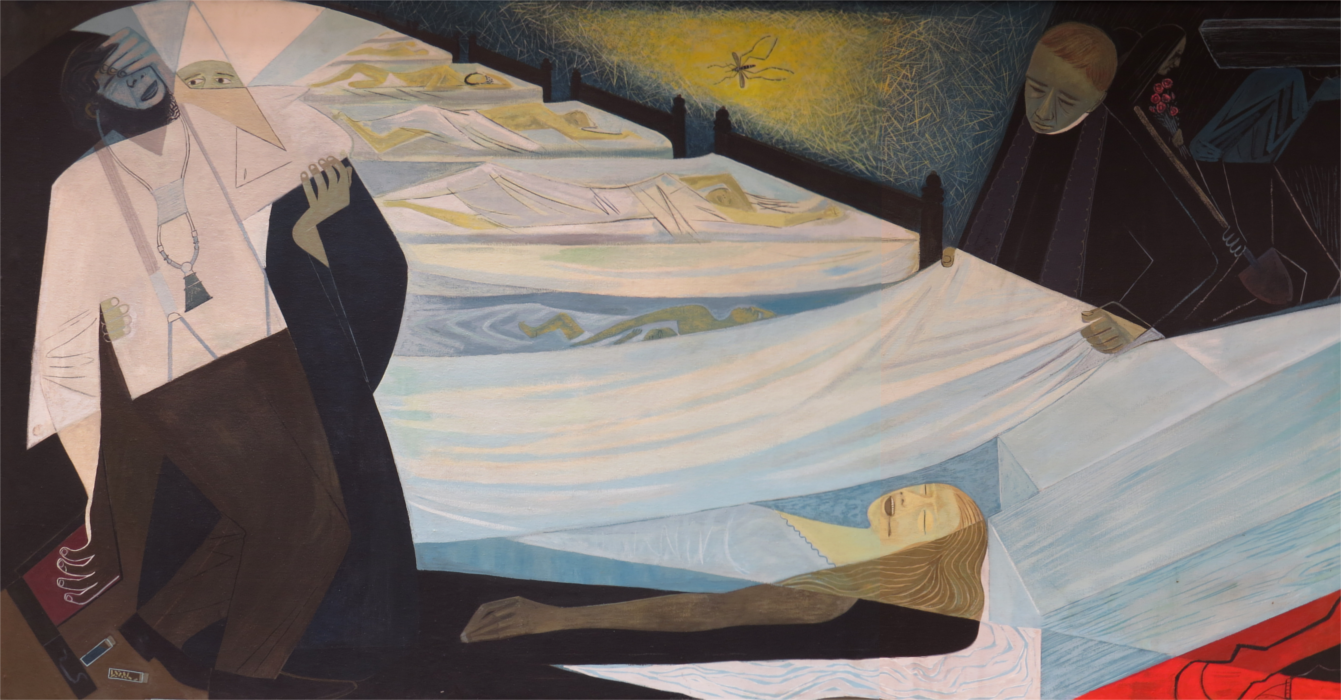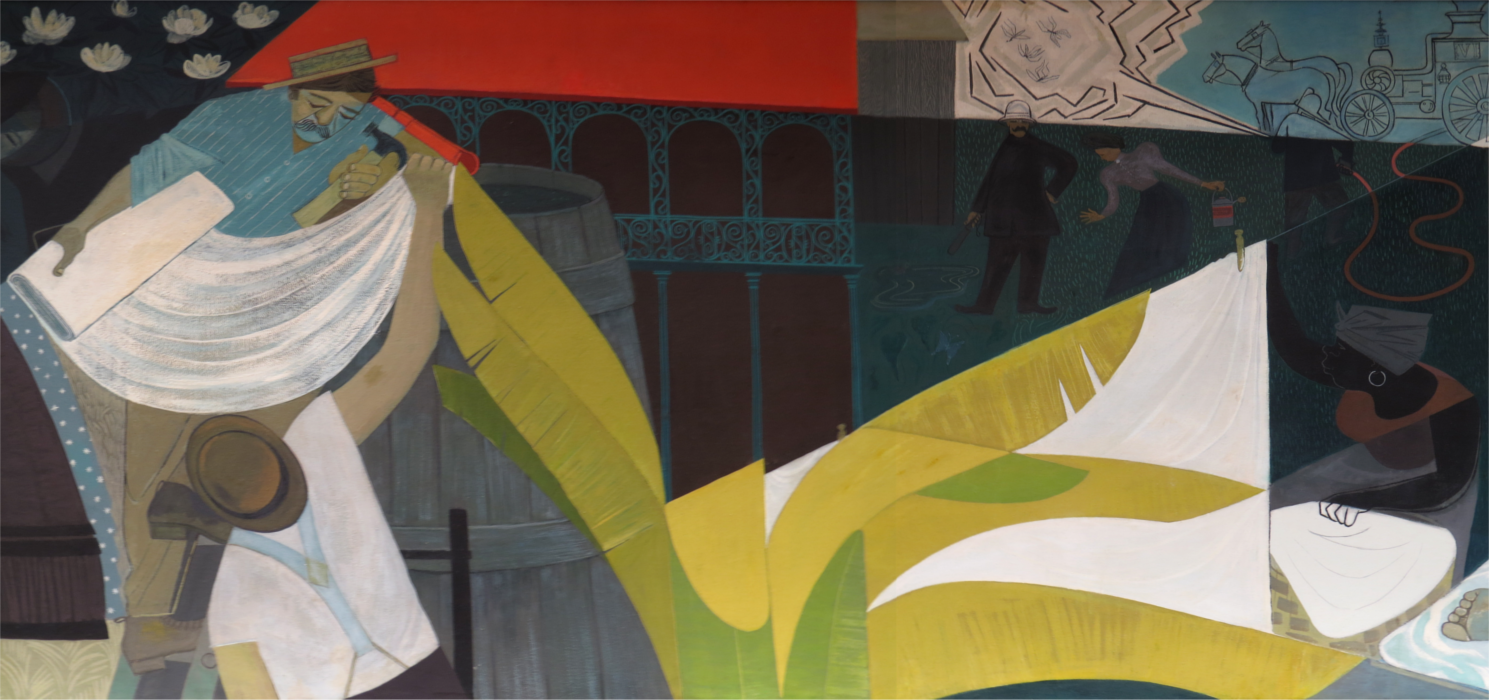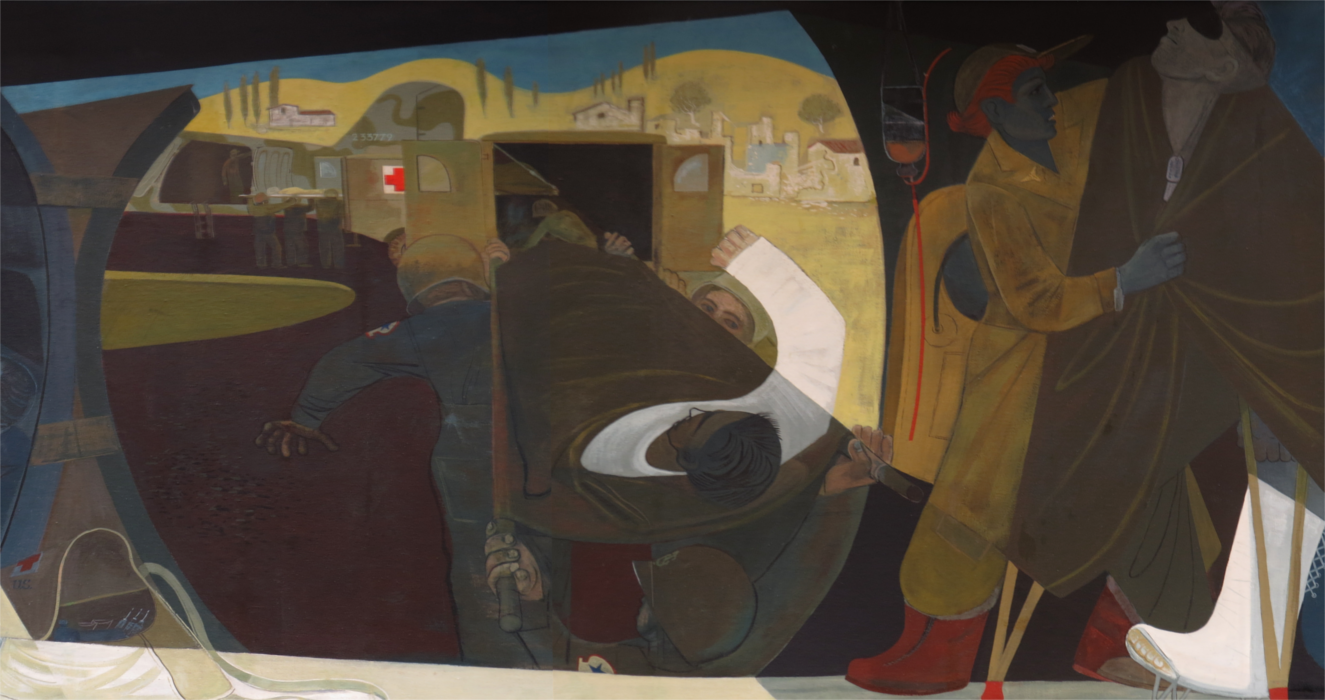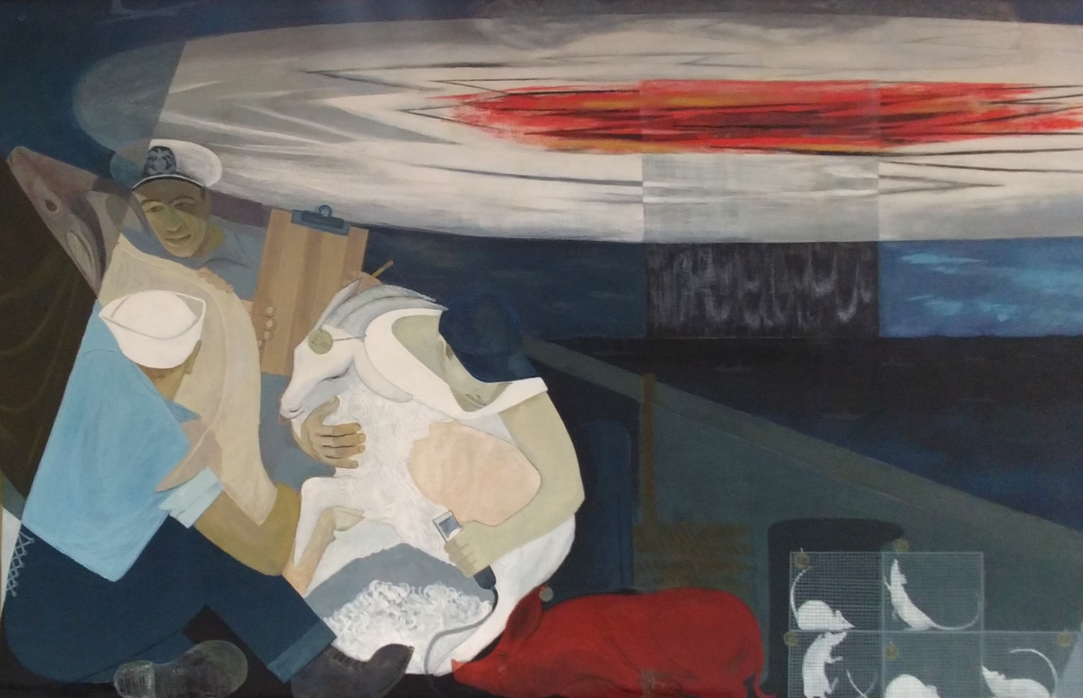The Mural - "The History of Medicine in Louisiana"
The 112-foot by 57-inch mural located in Dupré Library's Reference & Research Services area depicts memorable events in Louisiana’s medical history. It represents the great strides in medicine and public health occurring in the state from the early 18th century through the middle of the 20th century. The multi-panel mural begins with the habitation of the state by Native Americans and ends with the introduction of nuclear medicine during the advent of the atomic age. The semi-abstract painting has been described as “probably the most unique piece of artwork in Louisiana.”
The History of the Mural
In the 1940s, the Aloe Company, a medical supply company in New Orleans, LA, commissioned Franklin Boggs to capture the evolution of the state's medical history. Boggs made several trips to New Orleans to gather research for the project. He worked on the mural entirely in Wisconsin on the campus of Beloit College. He completed the mural in 1948 after taking two years to paint it. Boggs personally packaged and shipped the panels and oversaw the installation.
After 25 years on display at the Aloe Company, the mural's new home became the Tulane Medical Center. Boggs again traveled to New Orleans to oversee the removal and reinstallation. Several years later, the panels were taken down and placed into storage. The mural was on the path to obscurity and probably lost when it re-emerged from a Tulane storage area 15 years later. A group familiar with the artwork rescued the panels looking to preserve its history but struggled to find an organization willing to take the massive piece.
When hearing about the mural and its preservation effort, Dr. and Mrs. Thomas F. Kreamer of Franklin, were instrumental in getting the work to the University of Louisiana at Lafayette. At the University, the panels were restored by artists Robert Dafford and Wayne Ditch through the generous support of Teche Federal Savings Bank, the Friends of the Edith Garland Dupré Library, and the University of Louisiana at Lafayette Foundation. In 2002, the mural became part of the landscape of the 1st floor of the library. This time around, Boggs, now in his 80s, was unable to travel to oversee the operation. He did, however, write a letter to the University acknowledging the mural's restoration and preservation and, in a phone interview with library faculty and others, described the mural's new home at an academic library as simply "ideal".
View the mural in its entirety (PNG).
Contributors for the Restoration at UL Lafayette: Board of Directors of the Alliance for the Conservation of Louisiana Art and Artifacts, Dr. Flora Cherry, President, Ms. Patti Gay, Mr. George Schmidt, Mr. Gordon Wilson, Esq., Dr. and Mrs. Thomas F. Kramer, Teche Federal Savings Bank, UL Lafayette Foundation, Mr. Franklin Boggs, Mr. Ron Nief, Mr. Robert Dafford, Mr. Wayne Ditch, Dr. Ray Authement, Ms. Della Bonnette, Mr. Elwood Broussard, Mr. Joey Pons, Friends of Edith Garland Dupré Library





